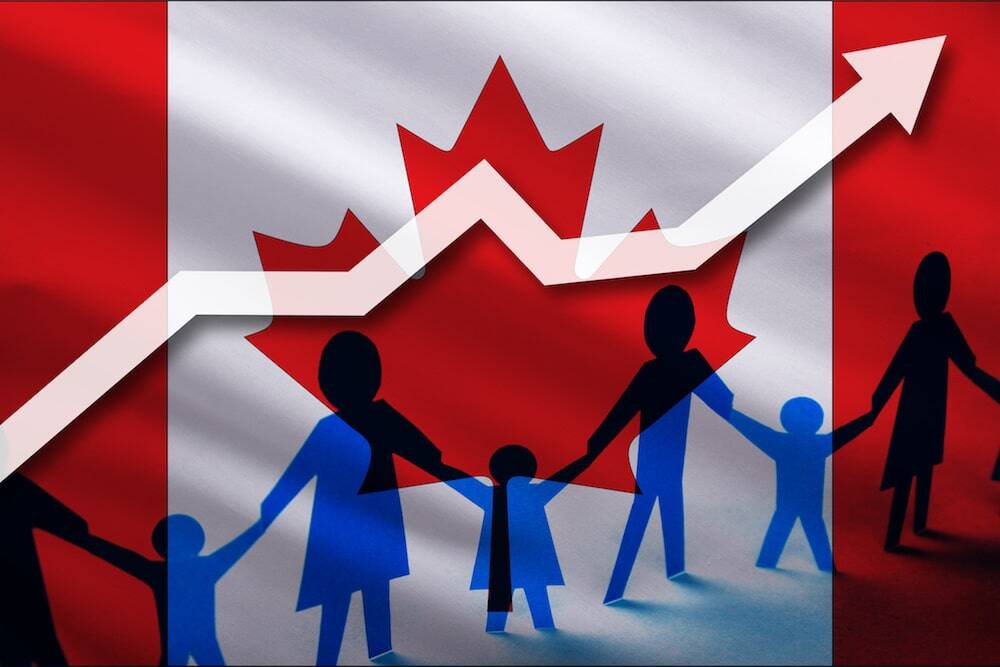Latest News
Canada targets 432000 immigrants for 2022

Canada targets 432000 immigrants for 2022 in its Immigration Levels Plan 2022-2024. The country plans to land more than 1.3 million permanent residents between 2022 and 2024.
Over the coming three years, Canada will target the following number of new immigrant landings:
- 2022: 431,645 permanent residents
- 2023: 447,055 permanent residents
- 2024: 451,000 permanent residents
Impressively, that’s upwards of 20,000 more new permanent residents this year. It is also 26,000 more than were expected to arrive under the previous immigration levels plan.
Under that previous plan, Canada planned to welcome 411,000 new permanent residents in 2022 and 421,000 in 2023.
In 2021 Canada broke its newcomer record by landing 405,000 new permanent residents, compared to its target of 401,000.
The levels plan guides Canada’s immigration system. It outlines the number of immigrants Canada aims to land under its various immigration programs.
Canada’s strategy has been primarily to transition foreigners already within the country to permanent residence. Prior to the pandemic, most new immigrants arrived to Canada from abroad.
The majority of the newcomers will be transitioned to PR through Canada’s Economic Class, which includes the very popular and successful Express Entry system.
Canada needs immigrants for pandemic economic recovery and labour shortages
In the past few years, Canada has embraced ever more ambitious immigration targets in order to jumpstart the economy and also deal with massive labour shortages.
Canada needs immigrants in order to recover from the economic impact of the coronavirus pandemic. Consequently, Canada is looking for skilled workers and international students to help the recovery effort.
As well, more than 500,000 Canadian workers are 55 years old or over, with many retiring in the next decade. A recent RBC report suggests Canada will need to rely even more on immigration as job retirements and quitting increases.
As a result of its aging population and low birth rate, Canada needs higher levels of immigration to support its population, labour force, and economic growth. Canada also needs to have enough workers to pay the taxes necessary to support important social services such as health care and education.
Canada’s immigration levels plan is also influenced by other factors. For example Canada also pursues social immigration objectives including reuniting families, providing humanitarian assistance, and strengthening its Francophone heritage.
See also Canada announced dramatic increases to Canada’s immigration levels for 2021 to 2023 and Canada to spend Millions on immigration to spark economic recovery.
Canada’s 2022-2024 Immigration Levels Plan
| 2022 | 2023 | 2024 | ||
| Overall Planned Permanent Resident Admissions | 431,645 | 447,055 | 451,000 | |
| Economic | Federal High Skilled | 55,900 | 75,750 | 111,500 |
| Federal Economic Public Policies | 40,000 | 32,000 | ||
| Federal Business | 1,000 | 1,000 | 1,000 | |
| Economic Pilots: Caregivers; Agri-Food Pilot; Rural and Northern Immigration Pilot | 10,250 | 11,250 | 12,750 | |
| Atlantic Immigration Pilot | 6,250 | 6,500 | 6,500 | |
| Provincial Nominee Program | 83,500 | 86,000 | 93,000 | |
| Quebec Skilled Workers and Business | See the Quebec immigration plan | To be determined | To be determined | |
| Total Economic | 241,850 | 253,000 | 267,750 | |
| Family | Spouses, Partners and Children | 80,000 | 81,000 | 81,000 |
| Parents and Grandparents | 25,000 | 28,500 | 32,000 | |
| Total Family | 105,000 | 109,500 | 113,000 | |
| Refugees and Protected Persons | Protected Persons in Canada and Dependents Abroad | 24,500 | 25,000 | 25,500 |
| Resettled Refugees – Government-Assisted | 19,790 | 17,260 | 13,000 | |
| Resettled Refugees – Privately Sponsored | 31,255 | 30,795 | 23,000 | |
| Resettled Refugees – Blended Visa Office-Referred | 1,000 | 1,000 | 1,000 | |
| Total Refugees and Protected Persons | 76,545 | 74,055 | 62,500 | |
| Humanitarian and Other | Total Humanitarian and Other | 8,250 | 10,500 | 7,750 |

























